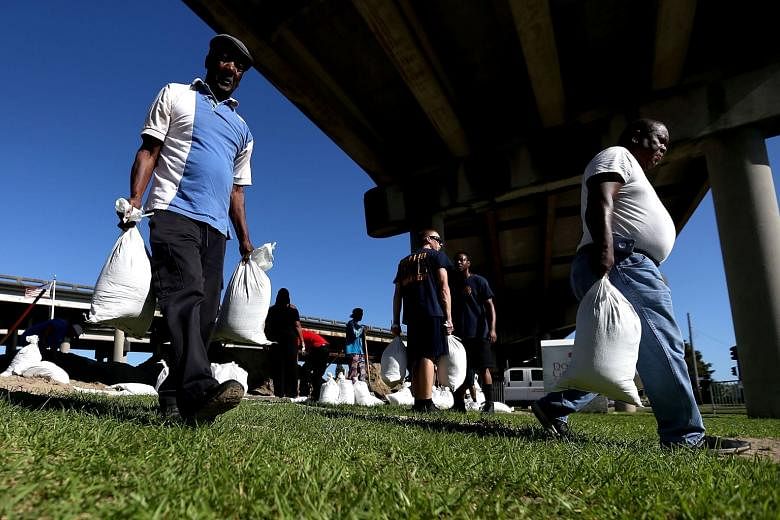NEW ORLEANS (AFP) - US Gulf Coast residents scrambled with last-minute preparations ahead of Hurricane Nate, expected to make landfall late on Saturday (Oct 7) as a Category Two storm after unleashing deadly flooding in Central America.
President Donald Trump said that federal officials were prepared for the storm and urged residents of the states of Louisiana, Mississippi, Alabama and Florida on Twitter to "listen to your local authorities & be safe!"
New Orleans, which was ravaged by deadly Hurricane Katrina in 2005, and other US Gulf Coast cities were under a hurricane warning.
Nate's center was located 290km south-southeast of the mouth of the Mississippi River, with winds swirling at 144kmh, the US National Hurricane Centre (NHC) said at 11am (11pm Singapore time).
The storm, a strong and growing Category One hurricane on the five-level Saffir-Simpson scale, was moving towards the north-west rapidly at 41kmh and is forecast to hit the Gulf Coast with winds of at least 153kmh, the NHC said.
Trump earlier issued an emergency declaration allowing federal aid to be sent to help mitigate the storm's impact.
"The combination of a dangerous storm surge and the tide will cause normally dry areas near the coast to be flooded by rising waters moving inland from the shoreline," the NHC warned.
New Orleans issued a mandatory curfew for Saturday from 6pm, and mandatory and voluntary evacuation orders were issued for certain low-lying areas.
Swells expected to affect the northwestern Caribbean over the weekend "are likely to cause life-threatening surf and rip current conditions," the US forecasters said.
BEWARE OF CROCODILES
At least 28 people were killed and more than 30 people were missing across Central America after Nate struck the region on Thursday and Friday.
Intense rains forced thousands from their homes, uprooting trees, knocking out bridges and turning roads into rivers across a swath of the region.
In Mexico, authorities declared an orange alert for the northern half of Quintana Roo state on the Yucatan Peninsula.
Luis Felipe Puente, Mexico's national coordinator of civil protection, urged people to "avoid aquatic, touristic and recreational activities" in Quintana Roo.
In Nicaragua, where authorities say 13 people died, Bonavide Velazquez, 60, was evacuated from her home in the south. "We were drowning," she said. "Thank God (emergency workers) helped us. The river swelled so much it swept away our house, our pigs, our chickens - it swept away everything."
Costa Rica, where a national emergency was declared, put its death toll at 10, including a three-year-old girl. Most were victims of falling trees or mudslides.
Authorities warned that crocodiles might be roaming after rivers and estuaries flooded.
Three other people were killed in Honduras, and two in El Salvador.
'PREPARE NOW'
As New Orleans braced for yet another powerful hurricane, Mayor Mitch Landrieu said that "our greatest threat... is not necessarily rain, but strong winds and storm surge."
Unlike Hurricane Harvey, which dumped record amounts of rain as it hovered over neighbouring Texas for a week, fast-moving Nate was expected to pass through quickly along a northerly path.
Louisiana Governor John Bel Edwards warned that Nate could cause unexpected damage.
"Anyone in low-lying areas... we are urging them to prepare now," he said.
In neighbouring Mississippi, lines formed at gas stations in areas along the potential path of the storm.
Some oil and gas rigs in the Gulf of Mexico were evacuated ahead of the storm.
The United States is recovering from two major hurricanes: Harvey, which tore through Texas and then Louisiana in August, and Irma, which slammed Florida in September.
Another powerful storm, Hurricane Maria, ripped through the Caribbean in late September, devastating several islands, including Dominica and Puerto Rico.
Central America, the Caribbean, Mexico and parts of the United States experience an Atlantic hurricane season every year that runs from June to November.

